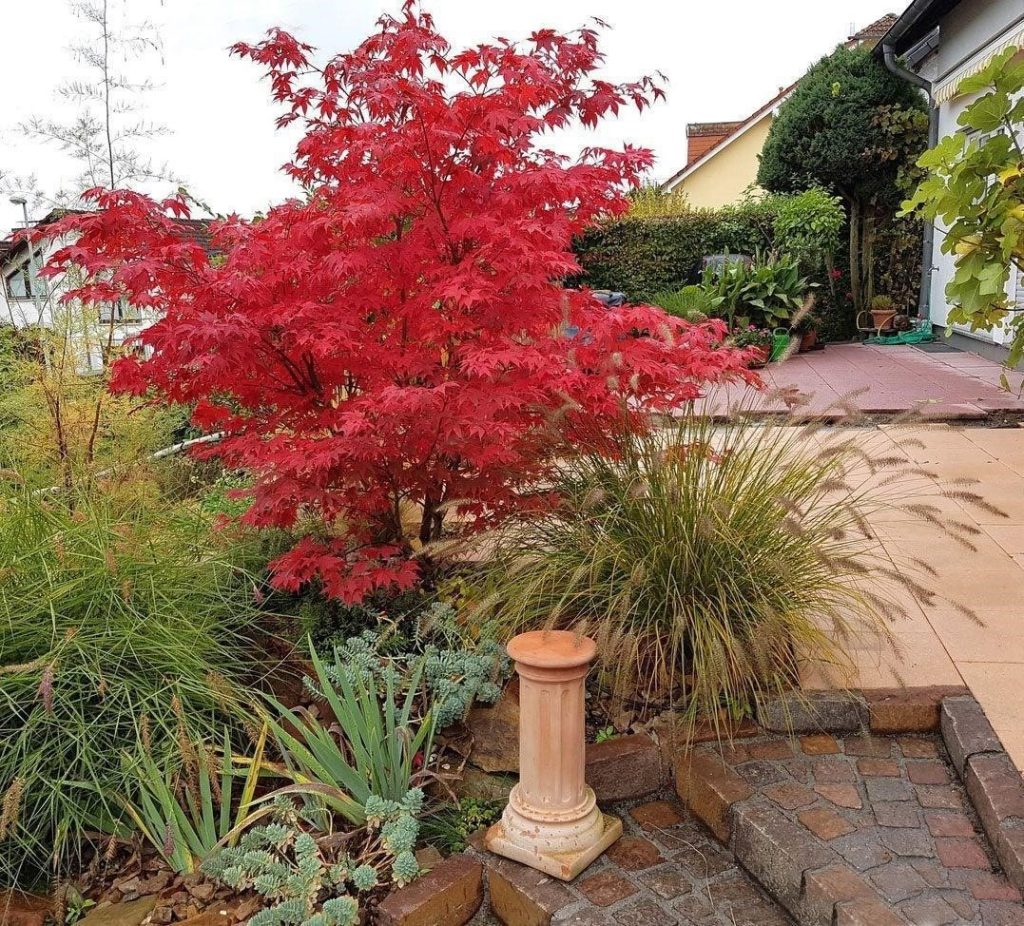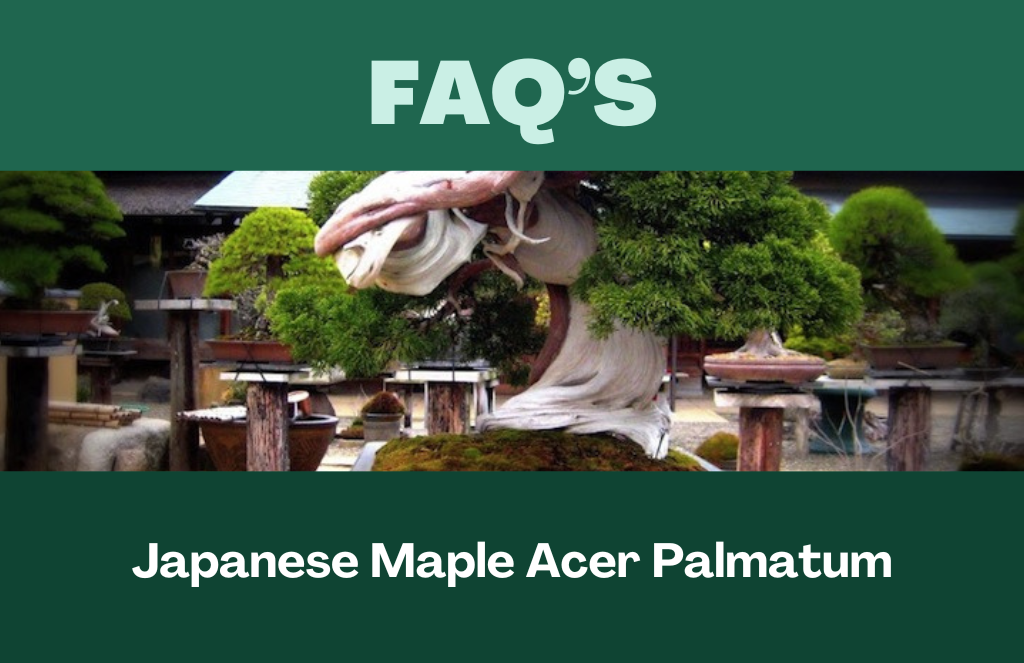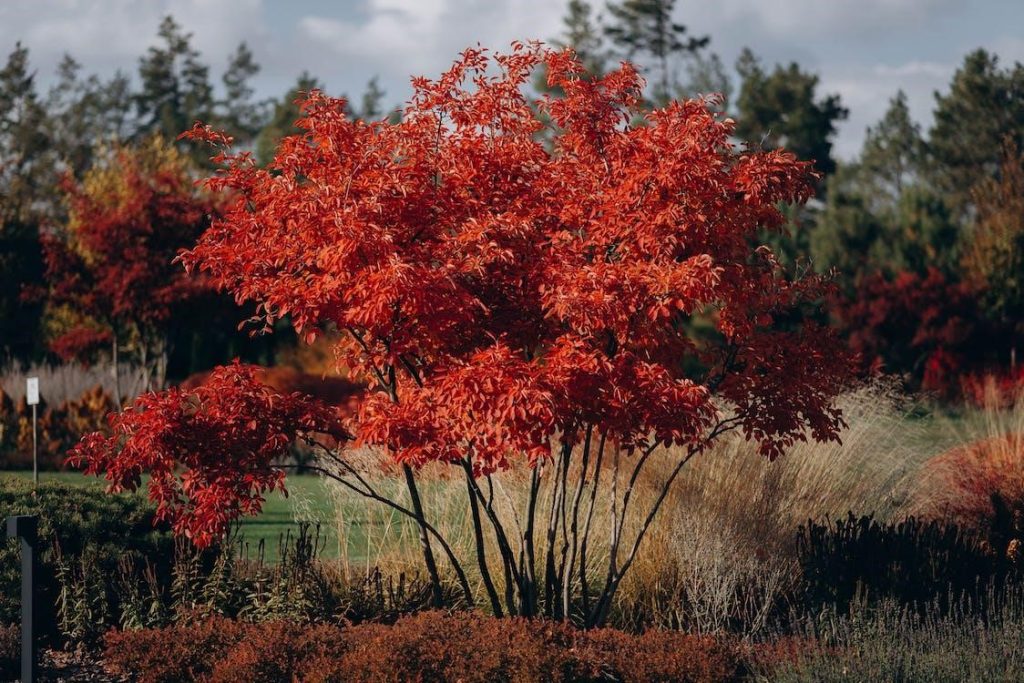What fertilizer should I use on a Japanese maple acer palmatum?
The Japanese Maple is a beautiful and delicate tree that is prized for its stunning foliage and graceful shape. To keep your Japanese Maple healthy and thriving, providing it with the proper nutrients( including fertilizer) is vital. But what fertilizer should I use on a Japanese maple acer Palmatum?
For a Japanese Maple Acer Palmatum, use a balanced, slow-release fertilizer with a ratio of 10-10-10 or 14-14-14, applied in early spring and early summer. A Japanese Maple Acer Palmatum requires a well-balanced fertilizer with a higher nitrogen content for optimal growth and health.
However, in this article, I discuss the best fertilizer options for Japanese Maples and provide some tips on how to fertilize these trees effectively. So, let’s get started.
Why Would I Need Specific Fertilizers For A Japanese Maple Acer Palmatum?
As a responsible caretaker of a Japanese Maple Acer Palmatum, it is crucial to understand the importance of using specific fertilizers tailored for this tree species.
Here are some reasons why specific fertilizers are needed for a Japanese Maple Acer Palmatum:
Unique Nutritional Needs
Japanese Maple Acer Palmatum has specific nutritional requirements that differ from other trees. These unique needs can only be met using fertilizers explicitly formulated for this tree.
Optimal Growth and Coloration
Using the right fertilizer can promote healthy foliage growth and vibrant coloration in Japanese Maple Acer Palmatum. In addition, it provides essential nutrients that support the tree’s metabolic processes, allowing it to thrive and display its characteristic vibrant red, orange, or purple leaves.
Preventing Nutrient Deficiencies
Inadequate nutrient supply can result in nutrient deficiencies, leading to various issues such as stunted growth, leaf discoloration, and overall decline in the tree’s health. Specific fertilizers designed for Japanese Maple Acer Palmatum can prevent these deficiencies and keep the tree in optimal condition.
PH Balance
Japanese Maple Acer Palmatum prefers slightly acidic to neutral soil conditions. Using fertilizers specifically formulated for this tree helps maintain the correct pH balance in the soil, creating a favorable environment for its growth and development.
Slow-Release Formulations
Japanese Maple Acer Palmatum responds well to slow-release fertilizers. These formulations provide a steady and continuous supply of nutrients over an extended period, allowing the tree to uptake nutrients at its own pace and reducing the risk of fertilizer burn or over-fertilization.
What Fertilizer Should I Use On A Japanese Maple Acer Palmatum?
Several recommended fertilizers can help enhance your Japanese maple’s growth and overall health. To help you make an informed decision, here are the recommended fertilizers for Japanese Maple Acer Palmatum:
Organic Fertilizers
Organic fertilizers are derived from natural sources and contain plant or animal materials. They are typically slow-release and provide a gradual supply of nutrients to your Japanese Maple. However, this slower release rate reduces the risk of over-fertilizing and promotes long-term soil health.
Here are the benefits and drawbacks of using organic fertilizers:
| Benefits of Organic Fertilizers | Drawbacks of Organic Fertilizers |
| Improves Soil Health | Lower Nutrient Concentration |
| Environmentally Friendly | Slow-Release Nature |
| Boosts Soil Microorganisms | Unpleasant Odor |
Recommended Organic Options
Regarding organic fertilizers for your Japanese Maple Acer Palmatum, several options exist. Here are a few recommended choices:
| Fertilizer | Key Point |
| Blood Meal | Rich in nitrogen, promotes leafy growth and vibrant foliage. |
| Fish Emulsion | Balanced nutrient mix, easily absorbed by roots. |
| Compost | Homemade or purchased, excellent for long-term soil improvement and nutrient replenishment. |
Inorganic Fertilizers
Inorganic fertilizers, also known as synthetic or chemical fertilizers, are manufactured using synthetic substances. They often have higher nutrient concentrations and provide immediate results.
Here are the benefits and drawbacks of using inorganic fertilizers:
Benefits:
- Inorganic fertilizers are usually highly concentrated, meaning a smaller quantity is needed to achieve the desired nutrient levels.
- They provide immediate nutrients to your Japanese Maple, ensuring rapid growth and quick results.
- Some inorganic fertilizers are formulated to target specific nutrient deficiencies, allowing you to tailor the nutrient composition to your plant’s needs.
Drawbacks:
- Inorganic fertilizers can leach into water sources and contribute to water pollution if not used properly.
- They may disrupt the natural balance of soil microorganisms, negatively impacting soil health in the long run.
- Over-fertilizing with inorganic fertilizers can lead to nutrient imbalances and burn the roots of your Japanese Maple.
Recommended Inorganic Fertilizer Options for Japanese Maple Acer Palmatum:
If you decide to go with inorganic fertilizers for your Japanese Maple Acer Palmatum, here are a few recommended options:
- Water-soluble fertilizers are convenient to use and quickly absorbed by the roots, delivering immediate results.
- Controlled-release fertilizers release nutrients gradually, allowing for consistent feeding without the risk of nutrient bursts.
Slow-release Fertilizers
Slow-release fertilizers provide a steady supply of nutrients to your Japanese Palmatum over an extended period. These fertilizers are typically granular or pellet-like, releasing nutrients gradually as they break down in the soil.
Slow-release fertilizers are convenient as they require less frequent applications than other types.
Balanced Npk Ratio Fertilizers
NPK (nitrogen, phosphorus, and potassium) are the three primary macronutrients plants need for healthy growth. You can choose fertilizers formulated explicitly for Japanese maple, with a balanced NPK ratio of 10-10-10 or 12-12-12.
A balanced NPK ratio ensures that your tree receives an adequate amount of each nutrient without causing excessive growth in one area.
Acidic Fertilizers
Japanese Palmatum thrives in slightly acidic soil conditions with a pH range of 5.5 to 6.5. You can choose fertilizers designed explicitly for acid-loving plants to maintain the desirable soil acidity for your tree.
Acidic fertilizers help provide the necessary nutrients while supporting optimal soil pH levels.
Micronutrient-rich Fertilizers
In addition to macronutrients, Japanese maple acer palmatum also benefits from micronutrients such as iron, manganese, and zinc.
You also look for fertilizers that contain these essential micronutrients, or consider using foliar sprays to ensure your tree receives all the necessary elements.
Micronutrient-rich fertilizers help prevent nutrient deficiencies and keep your tree healthy.
Factors To Consider When Choosing Fertilizer For Japanese Maple
Choosing the right fertilizer for your Japanese Maple Acer Palmatum requires considering factors such as:
Soil Composition
The pH level of the soil plays a significant role in nutrient availability. I already mentioned acidic soil with a pH of 5.5 to 6.5 is ideal for Japanese Maples.
You can test the soil to determine its pH level and adjust it accordingly using soil amendments, such as sulfur for lowering pH or lime for raising pH, if necessary.
Seasonal Application
Consider the timing of fertilizer application. Fertilizing Japanese Maples in early spring before new growth emerges is often recommended. Avoid late-season fertilization, as this can stimulate new growth that may be vulnerable to winter damage.
Organic vs. Synthetic:
Choose between organic and synthetic fertilizers based on your preferences and gardening practices. Organic options provide a slow and steady release of nutrients and contribute to soil health, while synthetic fertilizers offer a quick nutrient boost.
Water Solubility:
Some fertilizers come in granular form, while others are water-soluble. Consider your preferred application method and choose a fertilizer that aligns with your watering routine and gardening practices.
Age and Size of the Tree:

Younger trees may require a different nutrient balance than more mature ones. Consider the age and size of your Japanese Maple when selecting a fertilizer to meet its specific nutritional needs.
How To Apply Fertilizer To Japanese Maple?
Timing is crucial when applying fertilizer to your Japanese Maple. Apply it in early spring or late fall to ensure the tree receives vital nutrients during its active growing seasons.
Avoid fertilizing when the tree is dormant in winter or summer, as it may not effectively utilize nutrients during these periods. This tailored fertilization schedule supports your Japanese Maple’s year-round growth and health.
After selecting the right fertilizer, apply fertilizer to your Japanese maple Acer palmatum by following these steps for a practical application process:
- Start by watering the tree thoroughly for a few days before applying fertilizer. This ensures the soil is adequately moist and ready to receive nutrients.
- Apply the fertilizer evenly around the tree’s base, keeping it at least 6 inches from the trunk to avoid potential root burn.
- Use a handheld spreader or broadcast spreader to distribute the fertilizer. This ensures an even application and prevents concentration in certain areas.
- Follow the dosage instructions provided on the fertilizer packaging. Over-fertilizing can lead to nutrient imbalances and potentially harm the tree.
- After applying the fertilizer, lightly rake the soil to incorporate it into the top few inches.
Some Tips For Keeping Japanese Maples Healthy And Happy
Japanese maples, scientifically known as Acer palmatum, are stunning trees that add elegance and beauty to any garden. Several key factors must be considered to ensure that your Japanese maple thrives and remains healthy.
Here are some essential tips for keeping your Japanese maple happy and vibrant:
Proper watering
Japanese maples have shallow root systems, so adequate moisture is crucial. Water deeply and evenly, ensuring the soil remains moist but not soggy.
Mulching
Applying a layer of organic mulch around the base of your Japanese maple helps retain moisture, suppresses weeds, and insulates the roots during extreme temperatures.
Light requirements
Japanese maples prefer partially shaded locations to shield them from harsh direct sunlight, especially during the hot summer. However, they still require some sunlight to maintain their vibrant colors.
Pruning
Regular pruning is necessary to maintain the shape and structure of your Japanese maple. Remove dead or diseased branches and any crossing or rubbing limbs. Prune during the dormant season to minimize stress on the tree.
Pest and disease control
Regularly inspect your Japanese maple for signs of pests such as aphids, scales, or spider mites. If necessary, treat them with insecticidal soaps or horticultural oils. Additionally, ensure good air circulation and avoid overwatering to prevent fungal diseases.
Frequently Asked Questions And Answers

Can I Use Regular Fertilizer On A Japanese Maple Acer Palmatum?
It is not recommended to use regular fertilizer on a Japanese Maple Acer Palmatum. Regular fertilizer may contain high levels of phosphorus, harming the tree’s roots. Use a fertilizer specifically formulated for acid-loving plants to ensure the health and longevity of your Japanese Maple.
How Often Should I Fertilize My Japanese Maple Acer Palmatum?
Japanese Maple Acer Palmatum should be fertilized once in early spring and again in early fall. Applying fertilizer during these times allows the tree to benefit from the nutrients it needs most. Avoid over-fertilizing, as it can lead to excessive foliage growth and weaken the tree’s structure.
What Are The Signs Of Nutrient Deficiency In A Japanese Maple Acer Palmatum?
Signs of nutrient deficiency in a Japanese Maple Acer Palmatum may include pale or yellowed leaves, stunted growth, and weakened branches. If you notice these symptoms, testing the soil and addressing any nutrient imbalances through appropriate fertilization is a good idea.
Conclusion
Selecting the right fertilizer is essential to ensure the health and vitality of your Japanese Maple Acer Palmatum. Choosing a balanced and organic fertilizer specifically formulated for acid-loving plants is crucial. Your maple will flourish by providing nutrients, displaying vibrant foliage, and strong growth.
Follow the recommended application instructions and consult a gardening expert for specific needs. With proper fertilization, your Japanese maple will thrive and add beauty to your landscape for years.

